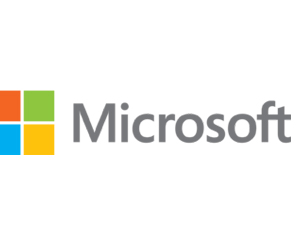EDTECH: How do generative AI tools benefit teachers and students?
JABBOUR: The three main themes we see in education are accelerating learning, improving efficiency and preparing for the future.
You can think of accelerating learning as hyper-personalization at scale. You’ll see personalized learning, improving accessibility, engaging learners and analyzing data efficiently. Improving efficiency involves tasks such as creating and customizing content, enhancing support, unlocking productivity and automating certain processes. Preparing for the future requires building AI literacy and equipping students with skills in AI because the field is changing very quickly.
EDTECH: What are some of the ways educators can take advantage of AI in the classroom?
JABBOUR: One example is a tutor bot we created that teaches students both general and specific topics with increasing difficulty as they progress. Our team has tested and implemented this across various districts and universities, focusing mainly on middle school, high school and undergraduate programs. In one case, a high school student was repeatedly failing physics tests related to angular momentum, despite the bot’s attempts to teach the subject.
Then, something unexpected happened. The bot paused and said, “Hey, it looks like we’re having trouble. Can we talk about something not related to physics? What do you like to talk about?” The student mentioned their interest in space, and the bot engaged in a 15-minute dialogue about space exploration and topics like the rings of Saturn and planetary movement. After this conversation, the bot asked the student to retake the test on angular momentum, and the student scored 100%.
MORE ON EDTECH: Are AI tutors the answer to lingering learning loss?
This experience was a master class for us in AI-enabled personalized teaching — something even the best human teachers strive for. But in a world where students don’t have infinite courage and teachers don’t have infinite time, it’s essential to consider how we can use technology to enhance education. Imagine if every student had access to this level of tailored learning for every topic. AI can make that possible.
Generative AI offers a real opportunity to reimagine education beyond tutor bots. It can create and customize lesson plans, quizzes and other educational content, enhance support services, automate administrative tasks and analyze data to provide actionable insights. By personalizing learning and supporting students’ unique needs, AI helps prepare them for the future while also lightening the load on educators.
EDTECH: What’s an example of how Copilot can be used in K–12?
JABBOUR: Consider a scenario where an administrator steps into a classroom for observation. The lesson is in progress, students are engaged, and the atmosphere is focused. The administrator captures key points in shorthand, noting the interactions and teaching strategies observed. With Copilot, those brief notes are quickly transformed into a comprehensive observation report that aligns precisely with state and district evaluation standards. This process not only saves time but also ensures that the feedback provided to teachers is both constructive and follows best practices. In states where multiple observations are required each year, this becomes a valuable tool that streamlines the evaluation process, allowing administrators to focus more on meaningful interactions with teaching staff.
Another significant application of Copilot is in the creation of differentiated learning activities. By drawing from internal curriculum sources and meeting individual student accommodations, Copilot enables the development of tailored educational experiences for each student. This is crucial in ensuring that all students, regardless of their learning needs, receive the support they need to succeed.
For educators, Copilot serves as an invaluable resource in many aspects of their work. It assists in lesson planning, curriculum development, grading and even communication with parents. By providing these tools, Copilot helps teachers manage their workload more effectively, enabling them to concentrate on what truly matters: teaching and engaging with their students.
TAKE THE QUIZ: What type of ed tech superhero are you?
Administrators also find Copilot to be a powerful asset, particularly in the areas or data analysis, policy development and resource management. It aids in creating professional development plans that are tailored to the needs of school staff and in developing school improvement plans that align with the institution’s goals.
In every task where it is used, Copilot functions as a supportive tool that enhances empathy, efficiency and effectiveness, helping educators and administrators alike to better serve their students. This moment is not just about technology; it’s about equipping our schools with the resources they need to foster an environment where both teaching and learning can thrive.
EDTECH: How do schools need to prepare to use this technology?
JABBOUR: We’re building frameworks for prompt-a-thons — a unique method to teach people how to be good prompt writers — which will enable users to interact with Copilot safely and effectively. Those are “train the trainers” programs to help organizations deploy modernized digital citizenship and AI education to their stakeholders. The best tool is a prompt-a-thon, but the thing that teachers really need now is support from their communities to innovatively deploy this to their students.
Brought to you by:













